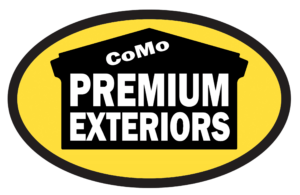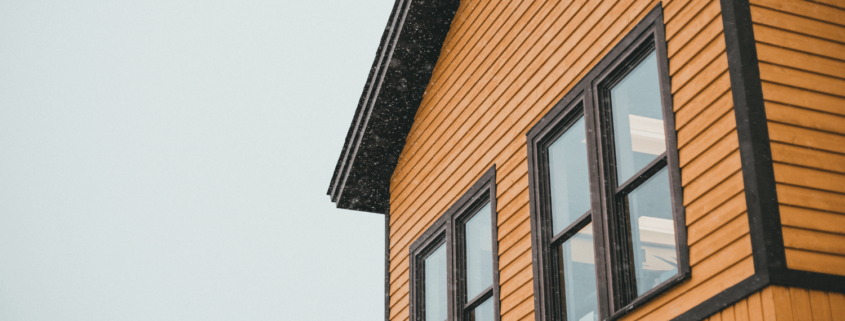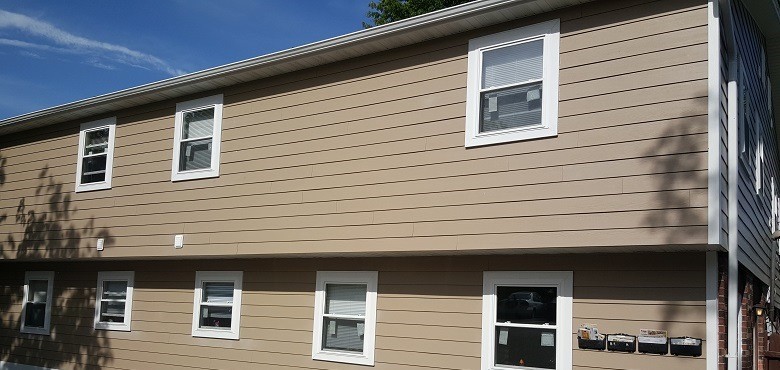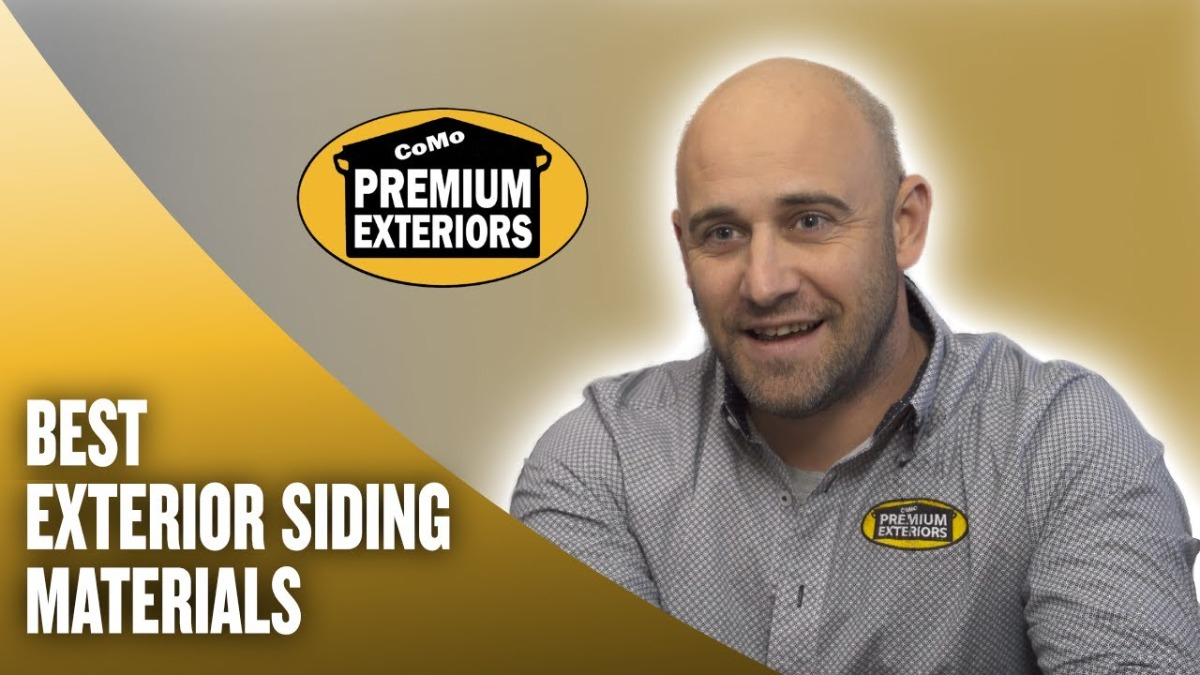Hardie Plank Siding vs Vinyl: Which is Best for Your Home?
Choosing between Hardie plank siding vs vinyl siding can be tough. This article breaks down their pros and cons to help you make the best choice for your home.
Key Takeaways
-
Vinyl siding is affordable and low maintenance, making it popular among homeowners, while Hardie plank siding offers superior durability and long-term value due to its fiber cement composition.
-
Although vinyl siding involves lower upfront costs, Hardie plank’s enhanced durability and lower long-term maintenance can justify its higher initial investment.
-
Choosing between vinyl and Hardie plank siding depends on climate, budget, and personal aesthetic preferences, as each material has distinct benefits and characteristics.
Understanding Vinyl Siding
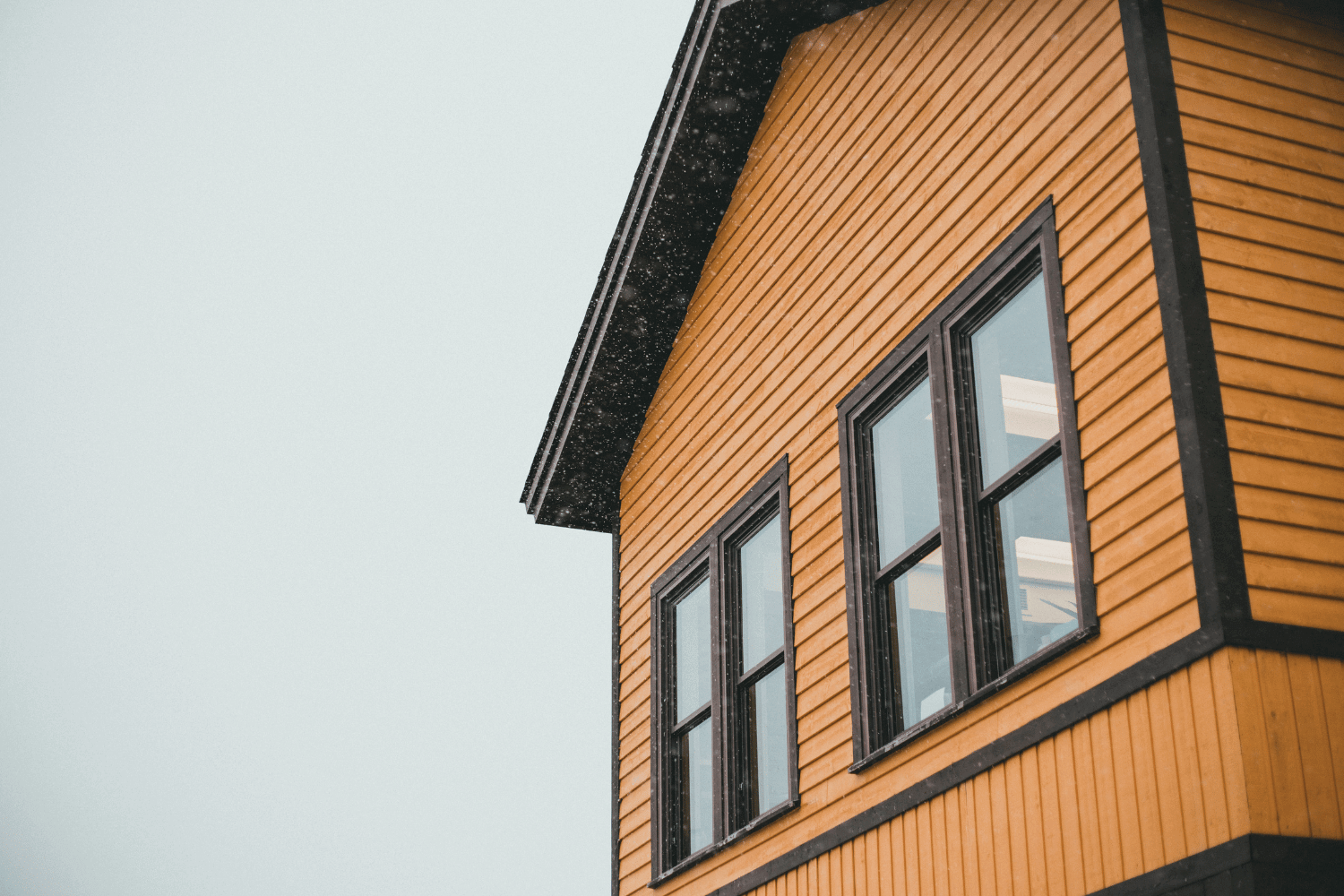
An example of vinyl siding on a modern home, showcasing its smooth finish and vibrant color.
Vinyl siding has long been popular for home exteriors due to its affordability and low maintenance. Made from polyvinyl chloride (PVC), it is produced by molding heated PVC into flexible sheets and shaping them into panels. This process not only keeps costs down but also results in a durable, weather-resistant product with a long lifespan.
Vinyl Siding Composition
Vinyl siding comes in thicknesses typically ranging from 0.040 to 0.048 inches. Its unique coloring process helps prevent fading and scratches, maintaining its appearance over time.
Consequently, vinyl siding offers a resilient option that minimizes the need for frequent repainting or maintenance.
Key Benefits of Vinyl Siding
Vinyl siding stands out for its affordability, which stems from mass production and easy installation. It’s a cost-effective solution for homeowners looking to enhance their home’s exterior without significant expense. Additionally, minimal upkeep is required—usually just a wash with soapy water and a garden hose.
Vinyl siding also offers significant durability compared to traditional materials like wood or cedar shake siding. It doesn’t require caulking or painting, further reducing maintenance work. This ease of care makes it an appealing option for a practical, long-lasting exterior finish.
Common Uses of Vinyl Siding
Vinyl siding is popular in residential settings, especially among homeowners who prioritize cost-effectiveness and low maintenance. Its design versatility and affordability make it a go-to choice for enhancing curb appeal.
Understanding Hardiplank Siding

A close-up view of Hardiplank siding, highlighting its texture and durability.
Hardie plank siding, also known as James Hardie board siding, is celebrated for its exceptional durability and long-term value. Made from fiber cement, Hardie siding offers a wood-like appearance with superior resistance to environmental elements, making it a popular choice for homeowners looking for James Hardie siding.
This type of aluminum siding is especially favored for withstanding severe weather conditions while maintaining its aesthetic appeal over time.
Hardie Plank Siding Composition
Hardie plank siding is primarily made of fiber cement, which includes cellulose, sand, water, and cement. This composition ensures durability and makes it an environmentally friendly option. Unlike other materials, fiber cement does not emit hazardous gases during production and is available pre-painted or primed for painting.
Key Benefits of Hardiplank Siding
Hardie plank siding is remarkably resistant to moisture damage, insect infestation, and extreme weather conditions like hail, extreme heat, and fire. This durability often results in a significantly longer lifespan compared to vinyl siding. Additionally, ColorPlus technology ensures that its coloration does not fade, keeping your home’s exterior vibrant for years.
Hardie plank siding also enhances the resale value of a home due to its durability and aesthetic appeal. Homes with Hardie plank often attract higher market values. Typically, it comes with a warranty of 30 to 50 years, offering long-term assurance. Its design flexibility and variety of styles and options further add to its value.
Common Uses of Hardie plank Siding
Hardie plank siding is ideal for homes in areas prone to extreme weather conditions. Its robust nature and resistance to environmental factors make it a reliable choice for protecting your investment and enhancing your home’s exterior.
Comparing Costs
Both vinyl and Hardie plank siding have unique financial considerations. While vinyl is typically more affordable upfront, Hardie plank offers long-term value that may justify its higher initial investment.
Initial Investment
Vinyl siding is generally more affordable, with costs starting around $3 per square foot. In contrast, Hardie Plank installation typically begins at $5 per square foot, representing a more significant initial investment. However, this higher upfront cost is often balanced by Hardie plank’s long-term durability and lower maintenance requirements.
Installation Costs
Hardie Board installation costs can be higher due to its complexity and weight, requiring more labor hours and specialized tools. On average, the installation cost is approximately $19,350.
Vinyl siding’s lighter weight makes it quicker and less expensive to install, reducing labor costs.
Long-Term Expenses
Although vinyl siding has lower upfront costs, it can incur higher long-term maintenance expenses due to its susceptibility to damage and need for periodic cleaning.
In contrast, Hardie plank siding offers better long-term value due to its durability and lower maintenance needs, despite the higher initial investment. Considering long-term expenses is crucial when selecting siding, as it impacts overall financial planning.
Durability and Maintenance
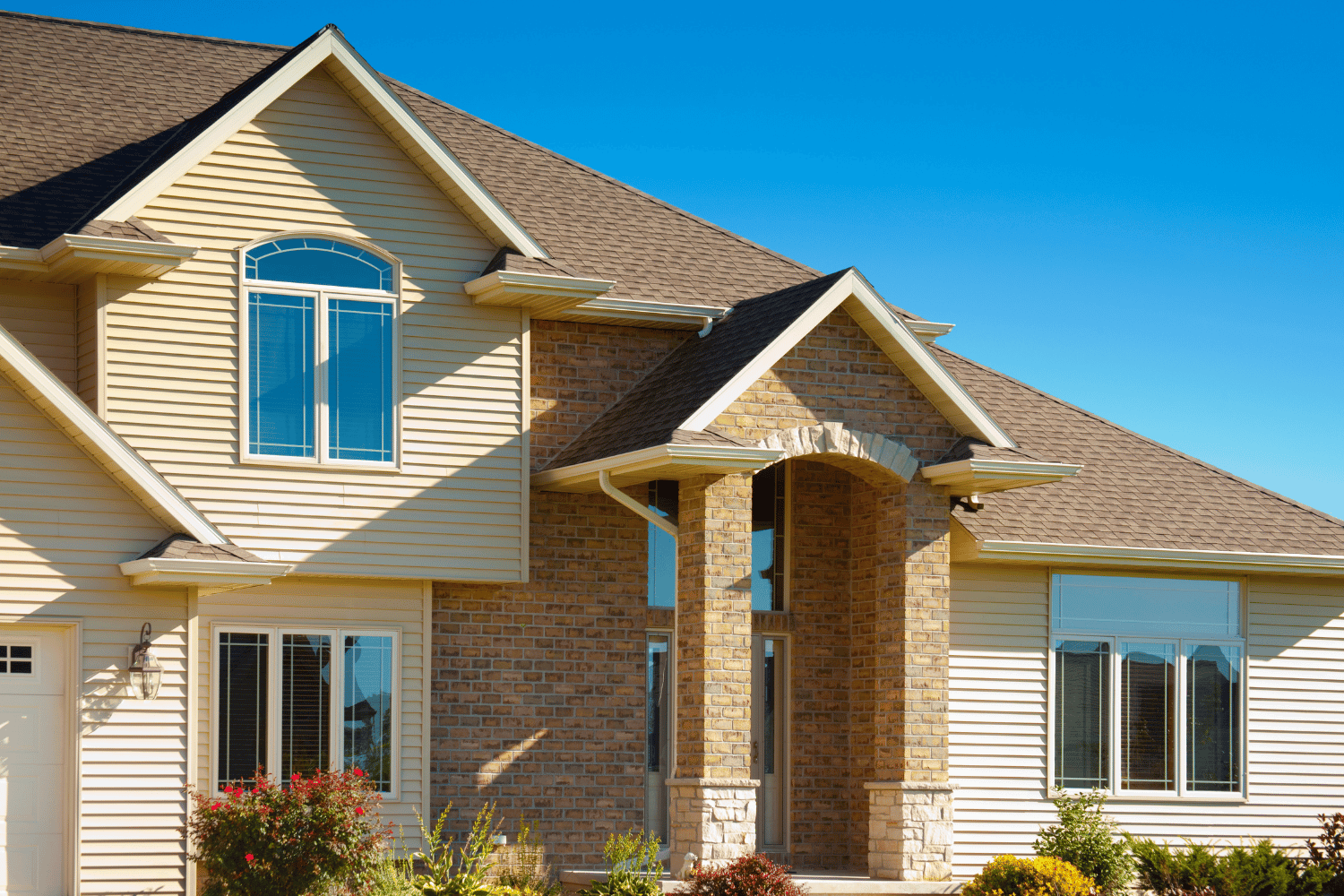
A comparison of vinyl siding and Hardiplank siding, illustrating their durability.
Durability and maintenance are critical factors to consider. Vinyl siding typically lasts 20 to 40 years, depending on environmental conditions and quality.
In contrast, Hardie plank siding offers superior durability, withstanding severe weather, insects, and fire.
Durability of Vinyl Siding
Vinyl siding typically lasts 20 to 40 years, though its durability can be affected by extreme cold, high temperatures, wind, and hail. Over time, it may become fragile and susceptible to damage, particularly from UV rays, which can cause discoloration. Proper installation and regular maintenance can help mitigate some of these issues.
Durability of Hardie Plank Siding
Hardie plank siding is exceptionally durable, resistant to rotting, warping, and melting. Its fiber cement composition makes it robust against pests and fire and performs well in various weather conditions, including freezing temperatures and moisture. This resilience makes it a superior choice for areas with extreme temperatures and moisture levels.
Maintenance Requirements
Maintenance needs for vinyl and Hardie plank siding differ significantly. Vinyl siding is low maintenance, typically needing only regular cleaning with soap and water. Hardie plank siding, while also low maintenance, may require repainting every ten years to maintain its durability and appearance.
Proper maintenance of fiber cement siding is crucial to prevent moisture absorption, which can affect its longevity.
Aesthetic Appeal
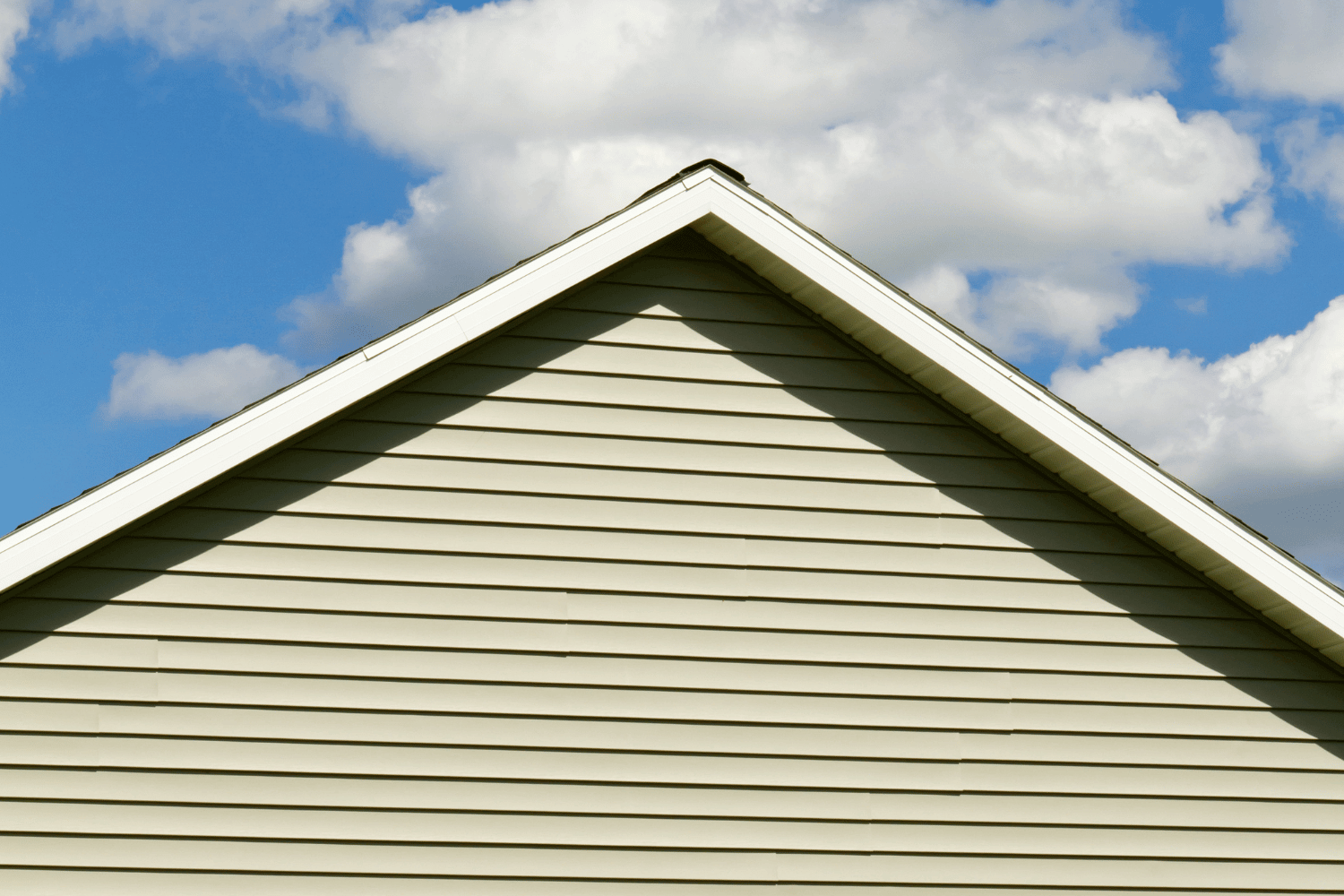
A visually appealing home exterior that showcases different siding styles and colors.
Visual appeal plays a significant role in choosing siding for your home. Both vinyl and Hardiplank siding offer various styles and colors that can enhance your home’s curb appeal and overall value.
Vinyl Siding Styles and Colors
Vinyl siding offers a wide selection of styles and textures, including horizontal and vertical panels, and can mimic cedar and oak wood grain, as well as wood siding. Homeowners can choose from a wide range of colors, allowing customization to suit any home style.
This variety enables a personalized touch that reflects individual taste and enhances the home’s character.
Hardie Plank Siding Styles and Colors
Hardie plank siding offers various design options, including horizontal or vertical panels, different textures, shingles, and stucco. It comes in a wide array of colors, from deep to muted tones, enriching its visual impact.
Choosing Hardie plank siding ensures high curb appeal, making it a favored choice for homeowners seeking an attractive exterior.
Environmental Impact
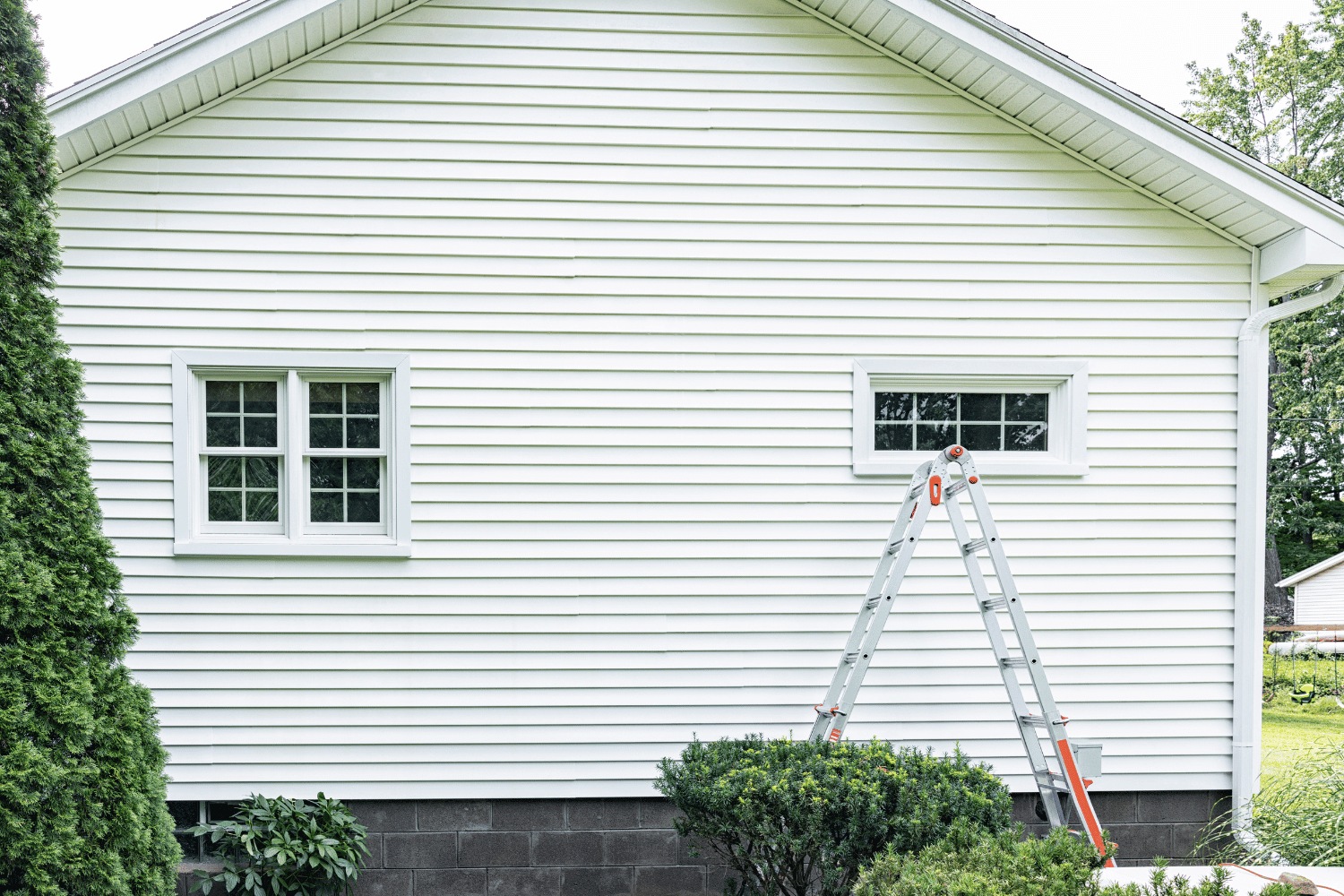
An infographic showing the environmental impact of vinyl and Hardiplank siding.
The environmental impact of siding is an important consideration. Vinyl and Hardie plank siding have distinct impacts, with vinyl being more recyclable and Hardie plank using sustainable materials for a lower overall ecological footprint.
Environmental Impact of Vinyl Siding
Vinyl siding is made from PVC resin, a process that can release harmful VOCs and greenhouse gases. However, it can be recycled, and its lightweight nature makes transportation and recycling more manageable.
Environmental Impact of Hardie Plank Siding
Hardie plank siding, made from fiber cement, is considered more sustainable than vinyl due to its composition and the absence of fossil fuels in its production. Additionally, it breaks down more readily at the end of its lifecycle, contributing to a lower overall environmental impact.
Making the Right Choice for Your Home
Selecting the right siding involves considering factors like climate, budget, and personal preferences. Both vinyl and Hardie plank offer unique benefits, and the best choice will depend on your specific needs and circumstances.
Consider Your Climate
The climate in your area is crucial in determining the most suitable siding. For instance, vinyl may not be ideal in regions with extreme temperatures, as it can warp or crack.
In contrast, Hardie plank’s resistance to severe weather conditions, including extreme heat and freezing temperatures, makes it a more resilient choice.
Budget Considerations
Budget is another critical factor when choosing siding. While vinyl siding is generally more affordable upfront, Hardiplank siding’s long-term durability and lower maintenance costs can make it a worthwhile investment.
Additionally, new replacement siding can significantly increase the overall value of your home, making it a smart financial decision.
Personal Preferences
Personal aesthetic preferences also play a vital role in siding selection. Whether you prefer the wood-like appearance and varied textures of Hardie plank or the extensive style and color options available with vinyl siding, your choice should reflect your desired look and enhance your home’s character.
Ultimately, aligning your siding choice with your personal style ensures that your home remains a true reflection of your taste.
Professional Installation and Expertise
Proper installation is essential for ensuring the longevity and performance of your siding. Hiring a certified contractor not only guarantees that the siding is installed correctly but also ensures compliance with manufacturer specifications, preserving the material’s integrity.
Why Hire a Certified Contractor?
Certified contractors possess the necessary expertise to install siding correctly, reducing the risk of errors and long-term issues. Additionally, warranties for materials and installation are often only valid when siding is installed by certified professionals, providing extra protection for homeowners.
Tips for Choosing a Siding Company
Choosing a reputable siding company is crucial for a successful installation. Look for contractors who provide detailed written contracts outlining project timelines, materials used, and payment schedules.
Ensure they offer warranties on their work and have a solid local reputation with proper licensing, certification, and insurance.
Summary
In summary, both vinyl and Hardie plank siding offer unique advantages and can significantly enhance your home’s exterior. Vinyl siding is cost-effective and low maintenance, making it an excellent choice for budget-conscious homeowners. Hardie plank siding, with its superior durability and aesthetic appeal, is ideal for those willing to invest in long-term value. Ultimately, the best siding for your home depends on your specific needs, climate, and personal preferences. Choose wisely, and enjoy the lasting benefits of a beautiful and resilient home exterior.
Frequently Asked Questions
What are the negatives of hardie board siding?
Hardie board siding can be costly due to its high material and installation expenses, and it requires significant maintenance, making it a time-consuming investment.
Why should I hire a licensed, certified, and insured contractor for James Hardie siding installation?
Hiring a licensed, certified, and insured contractor for James Hardie siding installation ensures that you are protected against accidents, and it guarantees that the work will be done expertly, offering peace of mind for your investment.
What should I look for in a siding company?
When selecting a siding company, prioritize those with a solid local reputation, appropriate licensing, certification, and insurance. Ensure to check customer reviews and references. This will help ensure a trustworthy and quality service.
How do siding replacement companies handle old siding removal?
Siding replacement companies efficiently remove old siding by stripping it safely, ensuring responsible disposal, and preparing the underlying surface for new installation. This process guarantees a smooth transition to your new siding.
What is the best siding to put on a house?
The best siding for your house depends on your specific climate, budget, and design preferences, with vinyl, wood, and fiber cement being popular choices. Ultimately, selecting the right siding will enhance both the durability and appearance of your home.
About The Author
Elias Abadi
Owner
Elias, the founder of CoMo Premium Exteriors, has steered the company to become a leading exterior renovation firm in Mid-Missouri, emphasizing quality and customer-centric values. A Columbia resident since age 10, he is an ardent Mizzou athletics supporter. Outside of work, Elias enjoys family time, attending his three sons’ sports activities, and engaging in outdoor pursuits like hiking, fishing, gardening, and hunting.
